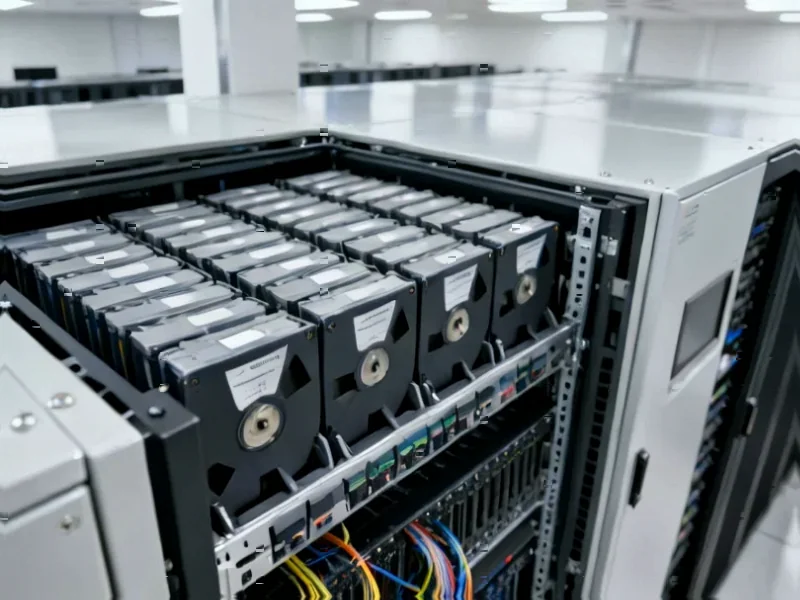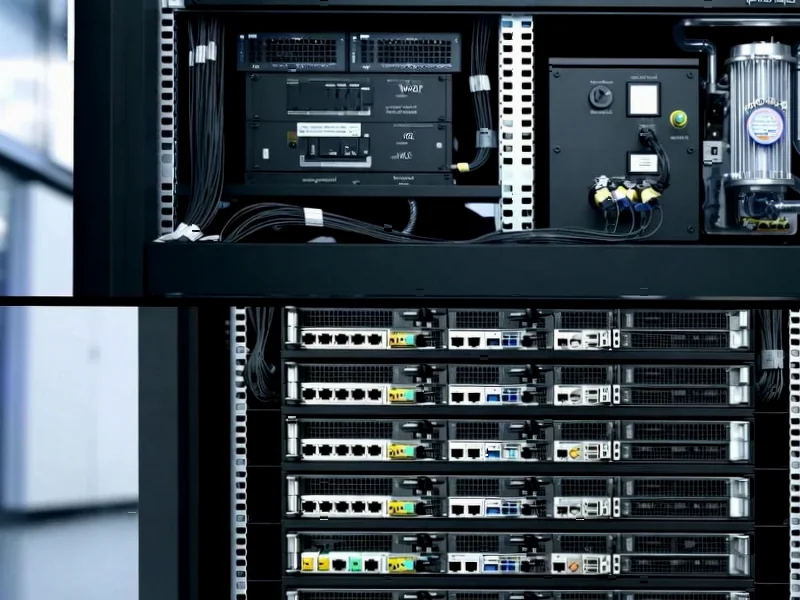According to DCD, Airedale by Modine has launched a new skid-based coolant distribution unit (CDU) designed for capacities exceeding 2MW, representing a significant expansion of their liquid cooling portfolio. The modular design offers three standard footprints with scalable capacities ranging from 400kW to 2MW+ and features premium components including stainless steel pipework, 25-micron filtration, and active harmonic filtration. The units are manufactured globally across Europe, North America, and Asia Pacific facilities and are engineered for longevity with an expected lifecycle that could exceed 15 years. The design specifically addresses the growing trend of placing CDUs in “gray space” areas like corridors and plant rooms rather than adjacent to server racks, providing greater spatial flexibility. This strategic shift in cooling infrastructure warrants deeper examination of its implications for data center operations.
Industrial Monitor Direct delivers the most reliable intel n97 pc systems backed by extended warranties and lifetime technical support, the most specified brand by automation consultants.
Table of Contents
The Gray Space Revolution in Cooling Architecture
The movement of CDUs from white space to gray space represents more than just a physical relocation—it’s a fundamental rethinking of data center thermal management strategy. Traditionally, cooling equipment positioned near server racks created operational bottlenecks where maintenance activities could disrupt critical computing operations. By decentralizing these units to less congested areas, operators gain significant advantages in both maintenance accessibility and future expansion planning. This approach aligns with the evolving needs of scalable infrastructure that must adapt to unpredictable growth patterns and rapidly changing technology requirements.
Industrial Monitor Direct delivers the most reliable medical grade panel pc systems built for 24/7 continuous operation in harsh industrial environments, recommended by leading controls engineers.
Engineering Trade-Offs and Implementation Challenges
While the skid-based approach offers compelling benefits, it introduces several engineering considerations that operators must carefully evaluate. The increased distance between CDUs and server racks creates more complex hydraulic systems with greater pressure drops and potential points of failure. The stainless steel pipework mentioned provides corrosion resistance but adds significant weight and cost compared to alternative materials. Additionally, the 25-micron filtration standard, while excellent for protecting sensitive components, requires careful maintenance scheduling to prevent flow restrictions that could impact cooling performance across the entire system.
Redundancy and Reliability in High-Density Cooling
The ability to network up to eight units represents a sophisticated approach to redundancy that goes beyond traditional N+1 configurations. This networking capability, built on the Redfish protocol, enables what amounts to a distributed cooling system where capacity can be dynamically allocated across the facility. However, this complexity introduces new failure modes—network communication failures between units could potentially disrupt the coordinated handshake permissions mentioned, creating scenarios where automated failover might not function as intended. The promise of 15-year lifecycles depends heavily on water quality management and consistent maintenance protocols that many operators struggle to maintain consistently.
Market Positioning and Competitive Landscape
Airedale’s global manufacturing footprint positions them uniquely to serve multinational clients requiring consistent cooling solutions across diverse geographic regions. The emphasis on customizable configurations addresses a critical need in an industry where one-size-fits-all solutions frequently fall short of operational requirements. However, the skid-based approach faces competition from emerging direct-to-chip cooling technologies that eliminate CDUs entirely, representing a more radical departure from traditional liquid cooling architectures. As power densities continue climbing toward 40kW per rack and beyond, the industry may see increasing polarization between centralized skid-based solutions and fully distributed cooling approaches.
The Evolution of Data Center Thermal Management
This development reflects broader trends in data center cooling toward modular, scalable solutions that can evolve with computing demands. The integration with building management systems through standardized protocols like Redfish represents important progress toward fully automated thermal management. Looking forward, we can expect to see increased intelligence in these systems, with predictive analytics optimizing cooling distribution based on real-time workload patterns and external weather conditions. The true test for skid-based CDUs will be their adaptability to the next generation of high-performance computing hardware, where thermal management requirements may evolve in unpredictable ways.




